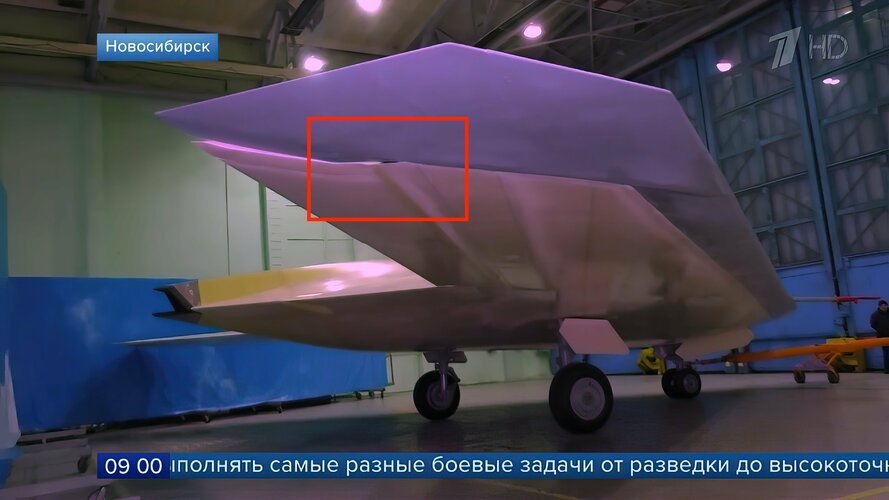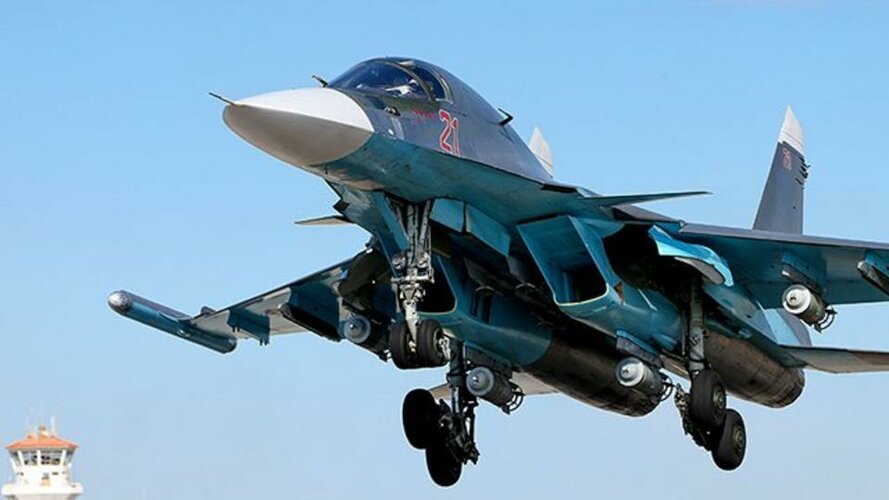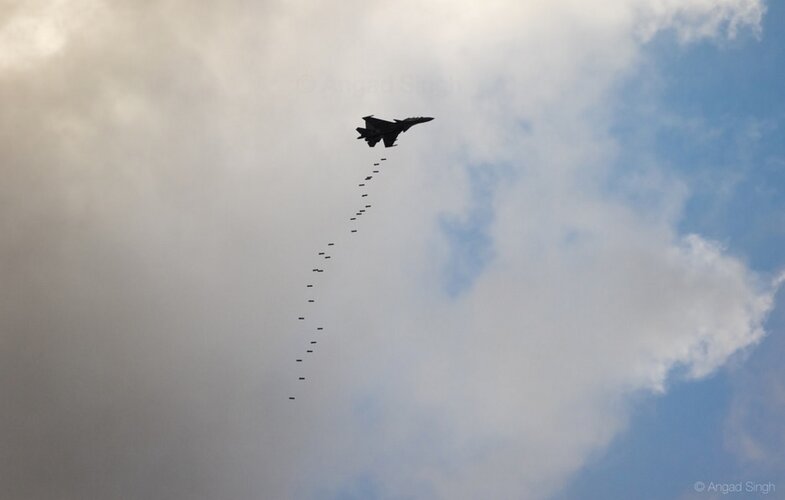do you really think the LTS could match the SU-30SM in range and payload? if so that is amazing, especially as its physically smaller and presumably significantly less RCS and perhaps less operation costs?
It should weight like 60-70% less than the Su-30 with a way smaller cross sectional area and one instead of two engines, so 30-40% lower fuel costs should be a given, plus half of the costs in the engine maintenance, which are a major contributor to the operational costs too. If you add to it that it is planned to be developed in unmanned version, allowing for a massive reduction of the flight hours/costs required for training, it is clear that the overall operational costs of such a fleet could be a fraction of that of the current heavy twin engine fighters based one.
Yes, maybe in dogfight LTS might be less capable (which is up to debate, as maxG value is nod indicative of maneuverability in dogfight)
There are two relevant topics to consider here:
- On the one hand the lower g-rating of the LTS compared to the 9g standard. This is a restriction indeed, but I suspect this is mainly due to the fact that the plane is rather big for the current export cleared motorization. I also suspect an eventual domestic version equipped with izd. 30 would not have this restriction
- On the other, the quite extreme area wing for the size of the plane, high indicated service ceiling and STOL performance all indicate a very low wing loading that should provide the plane with superior turning capacity in every condition where lift and not structural tolerance is the limit, that is, most mid and high altitude operational conditions. For example, defeating SAMs, arguably more frequent and more relevant than dogfighting.
Also one has to count that despite quite significant purchases, Russian airforce is still not modernized fully. For example, there are still vanilla Su-27s in use in Kaliningrad, vanilla MiG-29s in Armenia (and IIRC somewhere in Russia too), Su-27SM are reaching end of lifetime and are also fall under replacement, Su-24s are still in use and yet to be replaced fully either with Su-34 or Su-30SM, MiG-29SMT might also be replaced with something more capable. Not to mention Su-25.
I agree with the overall argumentation, would just point out that tactical bombers and CAS planes will probably not be replaced by the LTS
if thats the case, wouldnt the LTS potentially challenge the sales of the Su-57, for countries looking for a Flanker replacement?
Better for Russia, if they sell LTS instead of the Su-57 which is a much more capable airframe. They will not sell it cheap I am sure, so from the commercial perspective LTS is much more likely to succeed than the Su-57.
...as for its potential as a supersonic drone - that is with reheat correct? If so, we're talking about short bursts of supersonic speed and short legs - not something that could really be that more effective in supporting a supercruising Su-57 than an S-70 would be?
The unmanned version of the LTS would be a full blown fighter, while Okhotnik is a scarcely manoeuvrable subsonic long endurance bomb truck. It is not the kind of asset that can take an offensive role in air combat, because it would be relatively easy to defeat for enemy fighters. We don't know what the performance of the LTS would be with izd. 30, but it may be an acceptable supercruiser (in the broad sense of the term), despite intake design indicating that high supersonic speeds are probably not the most relevant goal. OTH, Okhotnik is subsonic and would also not be able to flight together with the Su-57, which is rather intended to provide cover a wider area due to long range and high speed, not necessarily to flight together with other planes from beginning to end of a mission.
Exactly which airforces are operating the MIG-21 anymore?
Several ones, take a look at the wiki
The real question is if the Su-75 will really end up any materially cheaper than a Su-30sm type aircraft to buy and operate.
The very likely answer is no.
If that’s the case for the very limited market that is actually realistically available to Russia then it’s not looking very good for the Su-75 being more than the propaganda focused folly it is threatening to be.
Talking about propaganda is rich coming from you.
The rest of the arguments are thoroughly flawed by ideological blindness and hence insisting you to check data will not help. Just keeping these posts for later, I think it s going to be good fun to read them in some years' time.
Well we will see what the final product manages in terms of payload-range vs the Su-30SM, TBH I have doubts it will be as great as aimed for.
They are passing the specs of a watered down export version, do you expect that they are very wrong once people like Strelets have said the plane is designed and thoroughly assessed/virtually tested? The whole point of DE is to be able to do that kind of things, and Sukhoi has the huge advantage that they already have thoroughly tested the actual elements of the plane in the PAK-FA program. We will see of course, but I don't see any fundamental reason for being very pessimistic. The plane is big in terms of internal volume as it is customary of 5th gen fighters and therefore it carries a lot of fuel, so 3000 km range is not surprising to me. Max payload is that of a F-16, max speed that of a Rafale/F-18, g rating is lower than standard... no stellar claims here
Still the number of legacy frames is not that high, especially considering there are still Su-30SM and Su-35 and MiG-35 that will be bought. After that you would have to wait at least 20 years before you need to replace something like Su-30SM, unless they go for really aggressive replacement schedule like with Kursk MiG-29SMTs.....not sure that is the best use of money.
Not sure how many MiG-35 are going to be purchased, I am not very convinced about that. But all the Flankers bought for the last 10-15 years will need to be replaced, and for the oldest ones time has already been running for many years. Plus fleet needs to grow a lot. Plus LTS is not a program for right now, maybe purchases start in 2030 and only in earnest in 2035 or so. By then many of the today not so old planes will need replacement indeed, and further forward the Flankers being currently purchased will need replacement too.
After that the question is, do you want more Su-57s and drones at that point, or more Su-75s? I know which I would pick.
There is no such dilemma with the LTS. It can be purchased as a manned plane or as a drone, and even better, to morph progressively the fleet from one paradigm into the other, which is priceless and a major plus of the proposed concept IMHO.
BTW, regarding to this topic of the foreign competition for markets, internal purchases and so on, directly from UAC's last publication:
The key issue in the fate of Checkmate, which will obviously affect the prospects for its promotion to the foreign market, is the internal start-up order. The possibility of internal purchases of Checkmate was supported by the Deputy Prime Minister of the Russian Federation in charge of the military-industrial complex, Yuri Borisov. He said that when planning a new state armament program for 2024-2033, the possibility of purchasing light single-engine fighters of the 5th generation Checkmate for the Russian Defense Ministry will be considered.
5th generation export forecasts
Almost all of these programs have common features:
· involve the participation of leading Western fighter developers in the United States Lockheed Martin or the United Kingdom BAE Systems, with the exception of the Chinese FC-31;
* plan to use, at least initially, foreign-made F414 or F110 engines of the American company General Electric, except for the FC-31 with a Chinese engine and the F-X program of Japan, which retains ambitions to create a national engine with the help of the British Rolls-Royce;
* have two engines and, accordingly, potentially higher operating costs and cost of flight hours than the F-35 and Checkmate single-engine fighters;
· they also do not have most of the national technologies inherent in 5th-generation fighters for creating radar with AFAR, optoelectronic sighting systems, circular information systems, infrared and radio frequency jamming systems.
Taking into account the analysis of the state of such foreign programs for the development of 5th-generation fighters as the Pakistani Azm, the Iranian Qaher-313, and the Indian AMCA (taking into account the period of creation of the national light fighter of the 3-4-th generation Tejas for more than 20 years) they will not compete with Checkmate in the foreign market until 2040.
Regarding the Turkish TF-X program, it should be noted that Turkey has achieved significant success in developing, equipping the national armed forces and exporting Bayraktar-type tactical drones. However, achievements in the field of combat aviation are still limited to the maintenance, repair and modernization of American 4th-generation F-16 fighters. Advances in aircraft development include a basic turboprop training aircraft and a Hurkus-type light attack aircraft, which has been delivered to the Turkish Air Force, as well as the Hürjet advanced turbojet training aircraft under development. The stated delivery dates of serial Turkish fighters of the 5th generation in 2034-40, both to the national Air Force and especially for export, are questionable.
Thus, the main competitors in the global market in the period 2022-2041 of the Checkmate fighter,with the exception of the heavy F-22 and J-20, will be the American F-35, Chinese FC-31 and Korean KF-21.
It is also necessary to take into account the trends of the global fighter market in the period 2022-2041:
* reduced market needs and quantitative reduction of the procurement plan with each subsequent generation of fighters, especially the 5th generation compared to the 4th;
* continuing production and procurement of 4+ generation fighters (F-16 Block 70/72, F-15EX, Rafale, Gripen NG) and extending their service life to 40 years or more, which will ensure their presence in the Air Force's combat service at least until 2060;
* The air forces of a number of Latin American and African countries, which were armed with 2nd and 3rd generation fighters, refused to purchase a fairly significant number of fighters of subsequent generations in favor of light attack aircraft based on turboprop training vehicles of basic training (American T-6 and Brazilian A-29) and advanced training (Russian Yak-130, South Korean T-50, Italian M-346 and Chinese L-15);
* the role of UAVs and the range of tasks they perform not only special, but also combat missions to defeat ground, surface and air targets, including in interaction with manned aircraft complexes, is increasing.
When promoting Checkmate to the foreign market, the application of the US law "On Countering America's Adversaries Through Sanctions" (CAATSA), which came into force in August 2017, cannot be excluded. CAATSA provides for a wide range of sanctions against both Russian subjects of military-technical cooperation and potential buyers of weapons from Russia. An example of the application of the US law in practice was the ban on the supply of F-35 fighter jets in response to Turkey's purchase of Russian S-400 air defense systems.
Based on these realities, the forecast for export deliveries of 5th-generation fighters in 2022-41 is as follows::
· more than 250 (excluding F-35 partner countries; with these countries in mind, the most optimistic forecast is up to 1,500) American F-35s,
· more than 150 (optimistic – up to 300) Russian Checkmates
* and approximately 50 (optimistic – up to 200) Chinese FC-31 and South Korean KF-21.
By the end of this period, the development programs for 6th-generation fighters will be mostly completed and offered to the foreign market. Such well-known programs that require separate consideration include the American NGAD (Next Generation Air Dominance), the European FCAS and Tempest, as well as the Japanese F-X.
Зарубежные программы разработки истребителей 5-го поколения Мир эксплуатируемых истребителей 5-го поколения пока представлен лишь американскими F-22 и F-35, российским Су-57 и китайским J-20. Однако еще несколько проектов машин 5-го поколения сейчас находятся в стадии реализации в мире. С...

zen.yandex.ru






